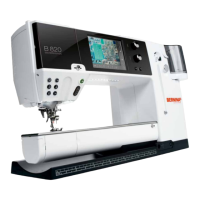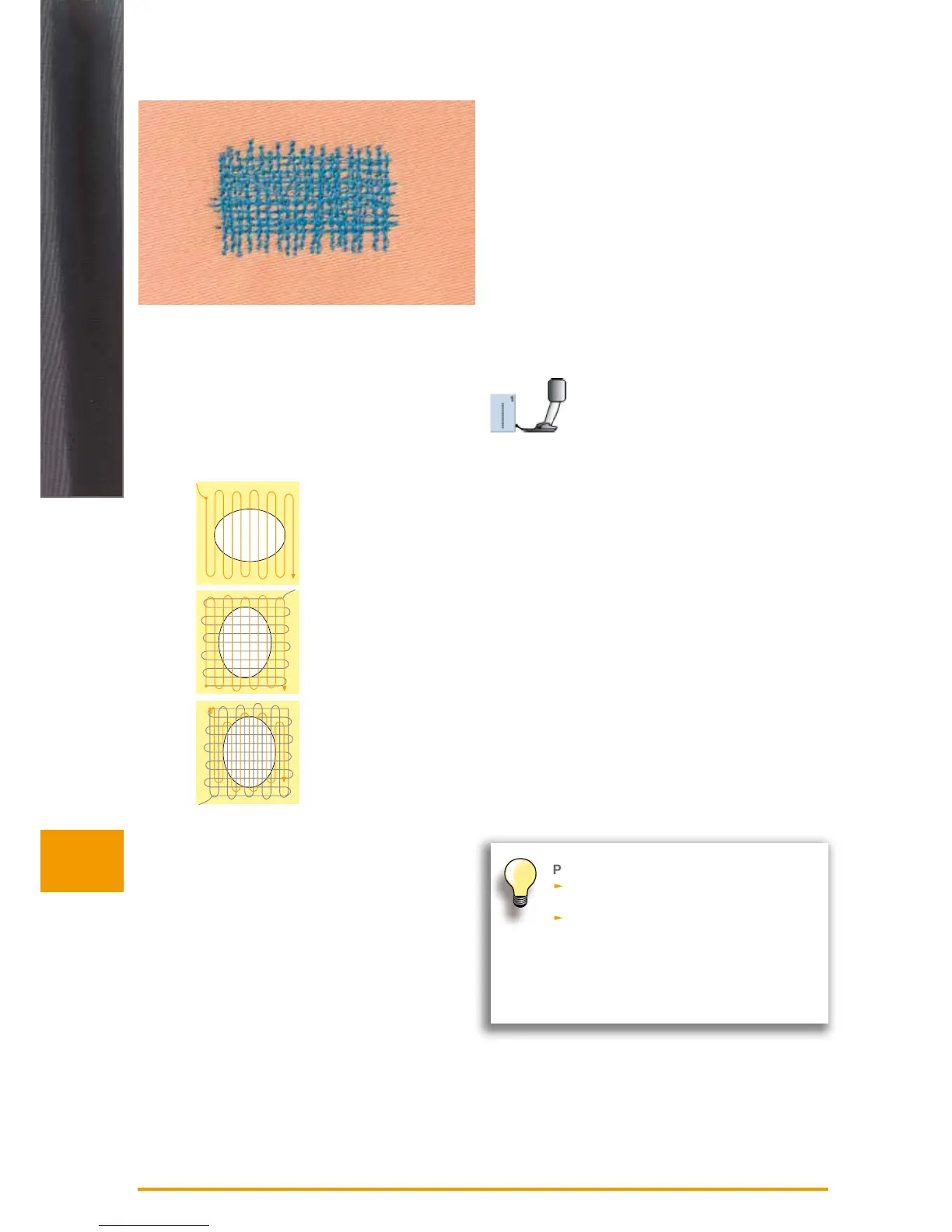94
Practical Applications
Manual - Straight Stitch no. 1
Preparation
► lower the feed-dog
► attach the Slide-on table
► hoop the fabric into the darning hoop (optional acces-
sory). The darning area stays evenly taut and cannot be
distorted
Sewing
► work from left to right without using pressure
► when changing direction on top and on bottom, move in
curves (avoid points as this prevents holes and thread
breakage)
► work in different lengths so that the thread is better
spread over the fabric
Stitch Over the Hole 1
► sew the first rows to cover the hole (not too close, sewing beyond the worn area)
► work the rows in irregular lengths
► turn work by a quarter turn - 90°
Cover the First Rows 2
► sew over the first rows - not too close for a soft finish
► turn work by a half turn - 180°
Complete Darning 3
► sew loosely and in same direction as 2nd rows
Darning Holes or Worn Areas
Darning
1
3
2
► Darning foot no. 9
Poor stitch formation
► if the thread is lying on the right side of the
fabric, the hoop is being moved too quickly
► if there are knots on the wrong side of the
fabric, the hoop is being moved too slowly
Thread breaks
If thread breakage is a problem, it could be
that the hoop is not being moved smoothly.

